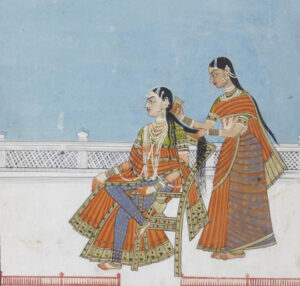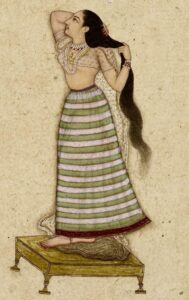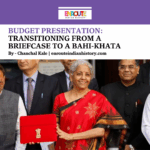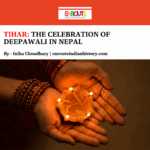Article Written By EIH Researcher And Writer
Shamiksha Mallick
Hair care has become an increasing concern amidst the rising issues like that of hair loss in this dusty and humid atmosphere. In the rush of the corporate world, people often neglect taking care of their body and their hair leading to damages beyond repair. These modern day problems have certainly led to a number of modern day solutions but there are certain practices or remedies that we as a civilization have borrowed from our ancestors as well. There are several effective remedial practices that were performed in Ancient India and now are also practiced in the 21st century. On the other hand, there are also a number of remedies that have died down with time.
Hair oiling has been an essential aspect of hair care since the past hundreds of years in India. Haircare via oiling the hair regularly is an Ayurvedic practice that stems from the Sanskrit word ‘Sneha’ that is, to love, or specifically ‘Snehapana’, that is the process of oleation. Oleation is usually combined with the process of Abhyanga, that is to self massage as an act of self love, also locally known as the process of champi. Massaging while oiling the hair has always been the best option to strengthen hair, hydrate the scalp, enable greater blood circulation, relax and also provide room for sharing a number of interesting fables and stories while the oil is being massaged. Champi or massaging the hair as a practice was also adopted by the British and imported back to England after they learnt it here in India. Charaka Samitha, a text on Ayurvedic medicine, also throws light upon the importance of oiling the hair to maintain healthy hair and avoid hair loss. The oils that are usually applied are olive oil, almond oil, good old castor oil or a mixture of these oils. Rani Padmini, interestingly, used a lot of natural oils (Tailams) to treat her hair and skin. Rather than applying the oil directly, she resorted to heating the oil and treating her hair with the aromatic steam of the oil.

Shampoos as a hair cleansing product were developed very recently around the 1930s only. Prior to that, we used a range of natural hair cleansers, one of them being the ‘hair fruit of India’ or the Shikakai. It’s a biological surfactant that can be used to wash hair. This practice of using natural hair cleansers isn’t something that is completely redundant nowadays. Many people have childhood memories of their mothers washing their hair using Shikakai leading to stinging and watery eyes. This fruit is also associated with their childhood where they had long and voluminous hair. Texts like Raj Nighantu by Narahari Pandita, that is a treatise on Ayurvedic medicines, describes the benefits of Shikakai in detail. It is also called, in Ayurveda, Bahuphena that means, extremely foam generating. Another natural hair cleanser is that of Reetha pericarp which is also called the Soapberry fruit that helps in cleansing and disinfecting the hair. Moreover, a number of natural hair masks are till date used by people like yoghurt and milk for moisturizing the hair and tomato and avocado for strengthening and cleansing hair.

Hairstyles are also subtle methods to keep the hair healthy and to avoid hair fall. Braiding is a very popular Indian practice that has probably become the official hairstyle for schooling girls! This has its roots in various historical texts and statues where it mentions that braiding of hair is done by women to tame their voluminous hair by keeping it detangled and avoiding hair loss. Several statues of women from Mohenjodaro display women in a braided hairstyle. A panel from Bharhut displays women having elaborate double braids at the back attached with a string of beads. Arthashastra mentions that braiding was one of the hair dressing styles adopted by women in the Mauryan period. Ivory combs are also found in Banawali and Kalibangan which suggests that detangling the hair regularly was a practice that existed during the Harappan civilization as well.
REFERENCES:
Kesha-Vinyas
https://artsandculture.google.com/story/kesa-vinyas-hairstyles-in-early-indian-art-i-archaeological-survey-of-india/8wUxIUdbIaV7JQ?hl=en
Why the Ancient Indian Tradition of Hair-Oiling Is the Perfect Form of Self-Care for Right Now
https://www.vogue.com/article/hair-oiling-indian-ayurveda-self-care-longer-thicker/amp
Tightly-wound to knotted, a history of Indian hairstyles
https://indianexpress.com/article/india/india-news-india/tightly-wound-to-knotted-a-history-of-indian-hairstyles/lite/
Hair Care Through the Ages
https://essentials.banyantree.com/blogs/blog/history-of-hair-care
The Ancient History of Hair Oiling
https://www.yahoo.com/lifestyle/ancient-history-hair-oiling-181319858.html



















